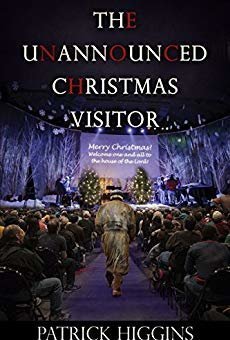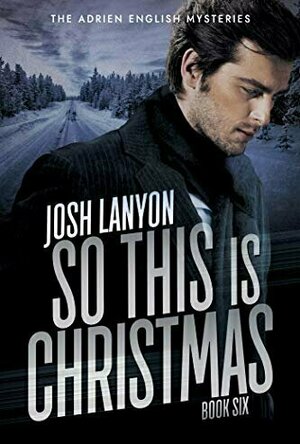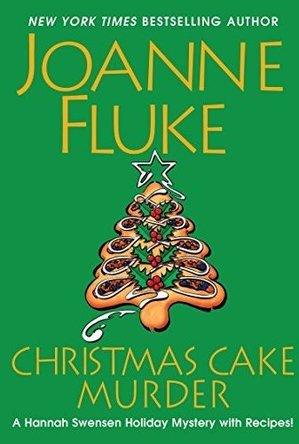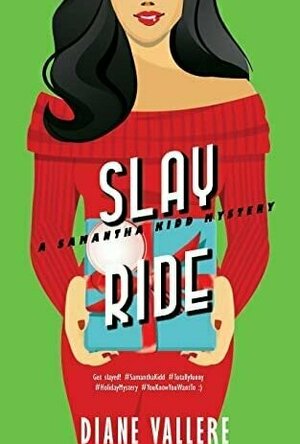Search
Search results
MaryAnn (14 KP) rated The Unannounced Christmas Visitor in Books
Mar 5, 2019
What if angels really did come from the most unlikely of places? That’s exactly what happens in this heartwarming story, set in a homeless community in Anywhere USA. Sent to Planet Earth by his Maker, disguised as a homeless person, Enoch was on a mission: to rescue a man whose life was slowly but steadily spiraling out of control Inspired by Hebrews 13:2, “Do not forget to show hospitality to strangers, for by so doing some people have shown hospitality to angels without knowing it,” this story will stir your soul like never be afore, guaranteed! 2016 IPA (INTERNATIONAL PUBLISHER AWARDS) GOLD MEDAL AWARD WINNER.
My Thoughts: This novel is certainly a winner! It comes just in time for the holiday and Christmas season, reminding us how important hospitality and loving others is. It's not about receiving but in giving from the heart. Patrick Higgins has done an incredible job of showing us through his writing how important it is to give to others. How we need to have the love of God in us in order to feel complete. This novel truly moved me and it will certainly speak to those who are feeling lost, depressed or not knowing their God-given purpose.
This book will make the reader think twice about how society treats the homeless and what would your church do if a homeless person came into the church next Sunday? Patrick Higgins hit a lot of points in this book and I recommend that every Christian give this book a read.
I received this book free from the publisher. I was not required to write a positive review and the opinions I have expressed are my own. I am disclosing this in accordance with the Federal Trade Commission’s 16 CFR, Part 255 : “Guides Concerning the Use of Endorsements and Testimonials in Advertising.”
My Thoughts: This novel is certainly a winner! It comes just in time for the holiday and Christmas season, reminding us how important hospitality and loving others is. It's not about receiving but in giving from the heart. Patrick Higgins has done an incredible job of showing us through his writing how important it is to give to others. How we need to have the love of God in us in order to feel complete. This novel truly moved me and it will certainly speak to those who are feeling lost, depressed or not knowing their God-given purpose.
This book will make the reader think twice about how society treats the homeless and what would your church do if a homeless person came into the church next Sunday? Patrick Higgins hit a lot of points in this book and I recommend that every Christian give this book a read.
I received this book free from the publisher. I was not required to write a positive review and the opinions I have expressed are my own. I am disclosing this in accordance with the Federal Trade Commission’s 16 CFR, Part 255 : “Guides Concerning the Use of Endorsements and Testimonials in Advertising.”
Leanne Crabtree (480 KP) rated So This is Christmas (The Adrien English Mysteries, #5.5) in Books
Jan 7, 2021
This has been borrowed from the Kindle Unlimited Library.
It has been 8 years - possibly more since I joined Goodreads in 2012 - since I read books five and six in this series - and I should point out, they were the only two books I DID read in this series after getting them free one Christmas from AllRomanceeBooks before the website shut down
did fall in love with Adrien and Jake despite not knowing all the stuff they had been through in the previous books so when I saw this, I had to read it. They do rehash a lot of what happened in the past and god, I was getting emotional reading it - so in a way I'm glad I didn't - but they are such a good couple.
Well this wouldn't be an Adrien English mystery without a mystery and this one involves an old acquaintance whose boyfriend has gone missing after visiting his family for the holidays. His old fashioned, well off family. Both sides are saying the other had something to do with his disappearance and Adrien is tasked with helping to track him down, while Jake is hired by the family to do the same.
There's some other drama going on at Cloak & Dagger, the bookshop Adrien owns and we see some sweet moments and sometimes some hot moments between Jake and Adrien. It had me laughing at times with Adrien's humour.
I do like this series and quite a few of this authors other series like Holmes and Moriarity - of which Moriarity got a mention in this as an ex cop turned author and I will be reading more of his books at a later date.
It has been 8 years - possibly more since I joined Goodreads in 2012 - since I read books five and six in this series - and I should point out, they were the only two books I DID read in this series after getting them free one Christmas from AllRomanceeBooks before the website shut down
did fall in love with Adrien and Jake despite not knowing all the stuff they had been through in the previous books so when I saw this, I had to read it. They do rehash a lot of what happened in the past and god, I was getting emotional reading it - so in a way I'm glad I didn't - but they are such a good couple.
Well this wouldn't be an Adrien English mystery without a mystery and this one involves an old acquaintance whose boyfriend has gone missing after visiting his family for the holidays. His old fashioned, well off family. Both sides are saying the other had something to do with his disappearance and Adrien is tasked with helping to track him down, while Jake is hired by the family to do the same.
There's some other drama going on at Cloak & Dagger, the bookshop Adrien owns and we see some sweet moments and sometimes some hot moments between Jake and Adrien. It had me laughing at times with Adrien's humour.
I do like this series and quite a few of this authors other series like Holmes and Moriarity - of which Moriarity got a mention in this as an ex cop turned author and I will be reading more of his books at a later date.
Mark @ Carstairs Considers (2456 KP) rated Christmas Cake Murder in Books
Dec 11, 2018
Hannah's First Brush with Murder
This book is set at the first Christmas since Hannah's father has died. Hannah has dropped out of her graduate program and is home trying to help her mother, Delores, deal with life after her loss, and Hannah is beginning to worry. Fortunately, Grandma Knudson and Annie come up with the perfect project to get Delores's mind off her loss. It seems Essie, a beloved member of the community, has fallen and broken her hip. In an effort to cheer her up, Delores is asked to organize a Christmas ball, with Hannah recruited to bake the cakes for the events. While all this is going on, Hannah begins to share her dreams of opening her own cookie and coffee shop. And a novel that Essie was working on captivates Hannah, Delores, Michelle, and Lisa.
You'll note my teaser doesn't mention the mystery. That's because it isn't until late in the book that it comes into clear focus, although enough bread crumbs have been laid out earlier that we do get a satisfying wrap up. Meanwhile, we get lots of planning for the ball and Hannah getting the things that will become staples of her life as we know it from the rest of the series. It's fun for series fans, although even then I thought the book could have been shorter. Those new to the series definitely shouldn't jump in here since it is so atypical.
You'll note my teaser doesn't mention the mystery. That's because it isn't until late in the book that it comes into clear focus, although enough bread crumbs have been laid out earlier that we do get a satisfying wrap up. Meanwhile, we get lots of planning for the ball and Hannah getting the things that will become staples of her life as we know it from the rest of the series. It's fun for series fans, although even then I thought the book could have been shorter. Those new to the series definitely shouldn't jump in here since it is so atypical.
Goddess in the Stacks (553 KP) rated To All the Boys I've Loved Before in Books
Dec 20, 2018
I picked this up mostly because the trailer for the Netflix adaptation looked AMAZING. It's the first book in a trilogy, and I really want to read the other two now! Lara Jean is the middle daughter in a house of three daughters, being raised by their widower father. The relationships between the four of them play a large part in the book, as they are all adjusting to the eldest daughter being away at college. Everyone's roles are changing, and in the middle of that, Lara Jean's private love letters get mailed to the boys she wrote them to, throwing her love life into chaos as well.
I loved almost every character in this book - even Lara's troublemaking best friend has a good heart. I definitely need to watch the Netflix show now, because I really want to see how Chris - aforementioned best friend - is represented!
The family scenes around Christmas really tugged at my heart - Christmas has always been my favorite holiday, and the author absolutely NAILED the nostalgic, slightly dreamy, loving holiday atmosphere.
To All The Boys I've Loved Before was a cute, sweet read, and really my only negative thing to say about it is the ending left me hanging! Which is part of why I really need to read the other two books, so I suppose it was a good strategy. But man I hate cliffhangers!
You can find all my reviews at http://goddessinthestacks.com
I loved almost every character in this book - even Lara's troublemaking best friend has a good heart. I definitely need to watch the Netflix show now, because I really want to see how Chris - aforementioned best friend - is represented!
The family scenes around Christmas really tugged at my heart - Christmas has always been my favorite holiday, and the author absolutely NAILED the nostalgic, slightly dreamy, loving holiday atmosphere.
To All The Boys I've Loved Before was a cute, sweet read, and really my only negative thing to say about it is the ending left me hanging! Which is part of why I really need to read the other two books, so I suppose it was a good strategy. But man I hate cliffhangers!
You can find all my reviews at http://goddessinthestacks.com
Merissa (13555 KP) rated Little Tree in Books
Dec 8, 2018
Little Tree by Rafe Jadison
Little Tree is a beauty of a book. Seasonal in that it takes place just before Christmas, this book is primarily a second-chance romance. Jared was a fool, and has paid the price. David was hurt, but carried on with his life. These two have baggage to contend with, and Jared can only hope that a past hurt won't take over the promise of a future.
I found this book to be 'sweeter' than the others by this author I have read. It was less eroticism, and more sensual. It was a delight to read, with no editing or grammatical errors that disrupted my reading. I loved both main characters, although I did want to whomp Jared around the head when we found out about his past! You could see it as lost opportunities, but I prefer to think the experiences will just have made these two fit together even better.
The characters are well-defined, and the situation the same. There are no doubts about this book, apart from whether they will end up together again or not. I'll leave that to you to find out! All I can say, is this is a great addition to Rafe Jadison's repertoire, and I thoroughly enjoyed every word. Absolutely recommended by me.
* A copy of this book was provided to me with no requirements for a review. I voluntarily read this book, and the comments here are my honest opinion. *
Merissa
Archaeolibrarian - I Dig Good Books!
I found this book to be 'sweeter' than the others by this author I have read. It was less eroticism, and more sensual. It was a delight to read, with no editing or grammatical errors that disrupted my reading. I loved both main characters, although I did want to whomp Jared around the head when we found out about his past! You could see it as lost opportunities, but I prefer to think the experiences will just have made these two fit together even better.
The characters are well-defined, and the situation the same. There are no doubts about this book, apart from whether they will end up together again or not. I'll leave that to you to find out! All I can say, is this is a great addition to Rafe Jadison's repertoire, and I thoroughly enjoyed every word. Absolutely recommended by me.
* A copy of this book was provided to me with no requirements for a review. I voluntarily read this book, and the comments here are my honest opinion. *
Merissa
Archaeolibrarian - I Dig Good Books!
Erika Kehlet (21 KP) rated Better Off Thread (An Embroidery Mystery #10) in Books
Feb 21, 2018
Marcy shows up at the hospital ready to play elf for some sick children only to find that Santa, being played by her friend Captain Moe, is suspected of murdering a hospital administrator. Sure that the two detectives in charge of the case arent going to worry about finding another suspect since they have Moe, Marcy and friends decide to investigate on their own.
I was surprised to find out after I finished this book that it was #10 in the series. On the one hand, I should have guessed because the characters and their relationships with each other were all so well developed. I didnt feel like I was missing a lot of background though, so I assumed it was a newer series. Whether youve been with this one from the beginning or are just jumping in now, youll want to catch this installment. Better Off Thread is the perfect cozy to get you in the mood for a little holiday music and some Christmas shopping!
I was surprised to find out after I finished this book that it was #10 in the series. On the one hand, I should have guessed because the characters and their relationships with each other were all so well developed. I didnt feel like I was missing a lot of background though, so I assumed it was a newer series. Whether youve been with this one from the beginning or are just jumping in now, youll want to catch this installment. Better Off Thread is the perfect cozy to get you in the mood for a little holiday music and some Christmas shopping!
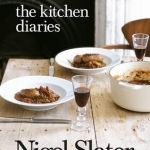
The Kitchen Diaries: A Year in the Kitchen
Book
Classic cookery writing from the award-winning food writer and author of bestselling autobiography,...
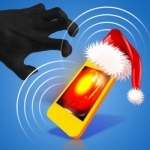
Alarm System For iPhone - Xmax
Utilities and Games
App
It's the christmas version of the Alarm system for your iPhone. Even if you are a bit careless...
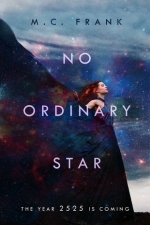
No Ordinary Star
Book
A soldier is summoned to the North Pole, days before the year changes, told to fix the great Clock...
Mark @ Carstairs Considers (2456 KP) rated Slay Ride in Books
Dec 23, 2022
Why Is Kyle Missing Trends?
In the couple of weeks before Christmas, Samantha Kidd has taken a temporary job as a social media influencer. Her friend Kyle Trent helped her get the job and is acting as her mentor. But when he misses a planned morning photo shoot, Samantha begins to worry. As she starts to get contradictory information about her friend, she knows something is wrong. Can she figure out what really happened?
This holiday entry, billed as a novella, is shorter than a typical novel in the series, but fans will hardly notice. There are still plenty of twists and turns that lead Samantha and us to the logical climax. Okay, so it was a bit rushed, but everything is explained. The characters, new and returning, are great, and we see more growth in Samantha. Along with that, we get some shenanigans from Samantha and plenty of humor. If you haven’t found this light, fun series yet, you’ll definitely enjoy it. And if you are a fan who hasn’t read this entry yet, you are in for a treat.
This holiday entry, billed as a novella, is shorter than a typical novel in the series, but fans will hardly notice. There are still plenty of twists and turns that lead Samantha and us to the logical climax. Okay, so it was a bit rushed, but everything is explained. The characters, new and returning, are great, and we see more growth in Samantha. Along with that, we get some shenanigans from Samantha and plenty of humor. If you haven’t found this light, fun series yet, you’ll definitely enjoy it. And if you are a fan who hasn’t read this entry yet, you are in for a treat.
